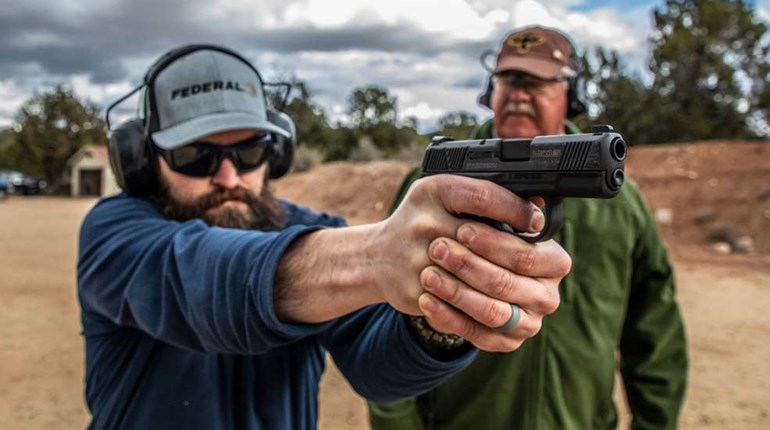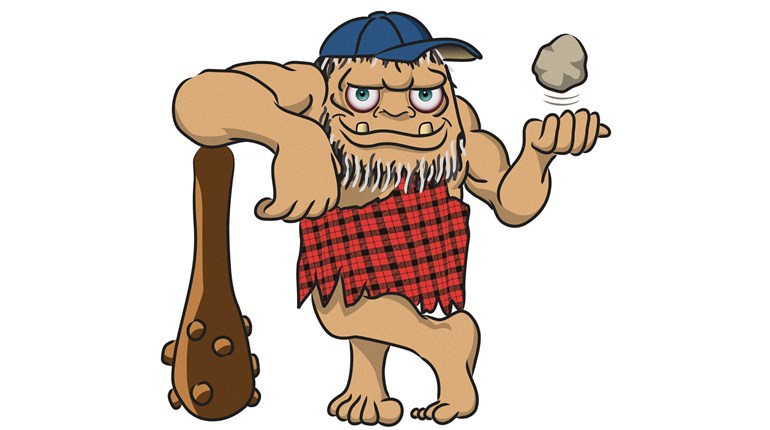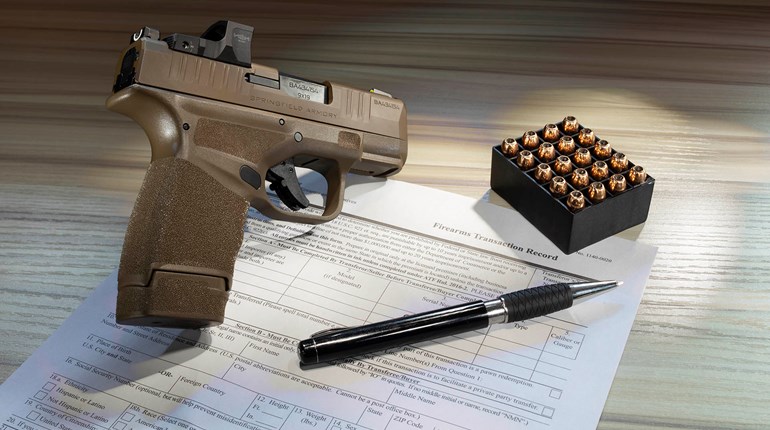
There are a number of popular shooting stances employed today, including the Weaver, the Isosceles, the Chapman and others, and arguments can be made for each one. But the most popular is the isosceles, and for most shooters it is the best option. The name is derived from the fact that the arms and body, when viewed from above, form an isosceles triangle with both arms near full extension. It’s utilized by police and competitive shooters, and it’s become the primary stance for many personal-defense instructors. Here are some key points that make the isosceles one of the top options for defensive shooting.
1. It’s Natural
The isosceles stance begins with your feet shoulder-width apart and your weight slightly forward over bent knees. The strong-side leg is either parallel with or slightly behind the other leg with the toes pointed toward the target, and most shooters find that this stance is natural and comfortable. Since the stance is natural it also allows you to get into shooting position more quickly, a major concern for defensive shooting. The isosceles stance rests your weight comfortably on your feet, and with both arms extended (the elbows shouldn’t be locked) this stance allows you to shoot for extended periods without getting exhausted. When you are finished shooting you simply stand up and you are in a natural upright stance without having to move your feet.
2. It Allows For Rapid Movement
Because you are facing directly at the target with your shoulders in line with your feet, the isosceles stance offers a wide field of view and you can comfortably rotate your body to engage targets on your weak side without feeling “bound up” as you can in other stances (such as the Weaver). Having your knees bent and your weight on the balls of your feet allows for rapid movement, too, so you can quickly move forward or back, left or right as needed. The isosceles stance, then, lends itself naturally to movement drills that can be incorporated later as the shooter becomes more comfortable and proficient with a firearm.
3. It’s Versatile
One of the great features of the isosceles stance is that it works just as well for shooting a pistol as a carbine. When you transition from a handgun to a rifle or defensive shotgun, all that you need to do is simply bring the firing hand back to the pistol grip and you are already in proper position, eliminating the need to learn to assume different positions. In addition, that square-shouldered stance helps absorb rifle recoil for faster follow-up shots, and having one stance eliminates the need to modify your shooting position based on the firearm in your hands.
4. It’s Easy to Master
It’s been my experience that new shooters can pick up on the isosceles stance very quickly, and within a few sessions at the range they are comfortable with this position. Since most people naturally stand upright with their shoulders parallel to their feet, it takes very little training to adjust the weight and lower the body slightly and lean forward—the basic components of the isosceles stance. Rather than trying to remember arm positions and elbow angles, new shooters simply bring their hands together (in the preliminary stages of training without a firearm in their hands) and push both arms forward toward the target. This training also promotes bringing the gun up to the head rather than lowering the head to meet the sights of the gun, a critical element in proper shooting. New shooters will gain the confidence they need quickly and will be more comfortable when shooting.
Want to learn it? Find an NRA Training Course here!







































